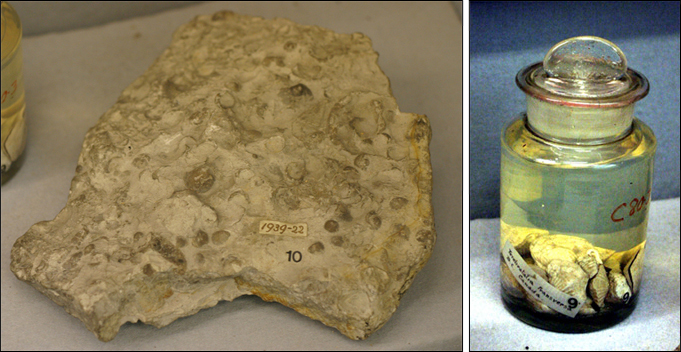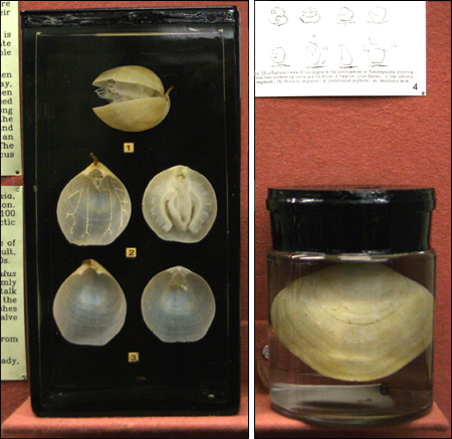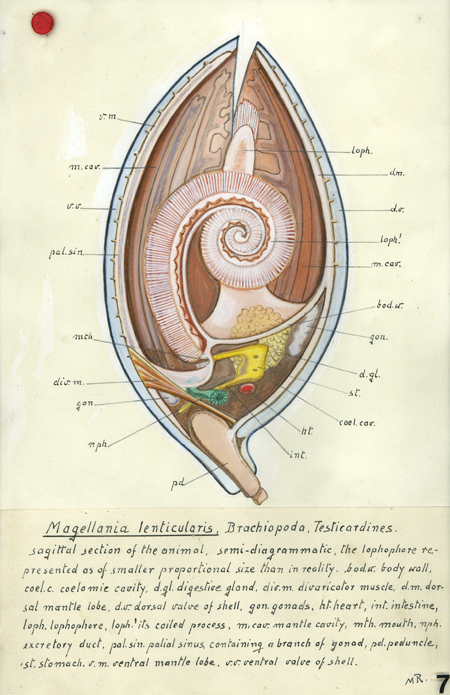Articulate brachiopods possess a hinge of inter-locking teeth and sockets between the valves. Their lophophore has an internal skeleton; the intestine ends blindly. The life cycle of Terebratulina sp. is typical of an articulate brachiopod: there is a brief (24-30 hour) free-swimming larval stage before the animal begins its sessile existence. The larva has a ciliated anterior lobe, which represents the body and lophophore, a posterior lobe that forms the pedicle, and two mantle lobes that will secrete the valves. Once settled, the larvae metamorphose and the adult structures develop from their larval precursors.
Clockwise from top:
Laqueus californicus lives between 200 and 500 fathoms in Monterey Bay, California. These specimens have been prepared to show the lophophore used for suspension feeding. Two long tentacles are coiled to fit within the shell. Ciliary action draws water in and out through an inhalent and an exhalent aperture respectively. The food particles are trapped in mucus and borne to the mouth by cilia.
A large specimen of Magellania, collected by the Discovery Expedition. This species lives between 3 and 100 fathoms in Australian and Antarctic waters.
Drawing of the internal structure of Magellania by Professor Ramult, Curator of the Collections in the 1950s.
Terebratulina transversa from Canada.
Fossil brachiopods from Aberlady, East Lothian, Scotland.

| 









